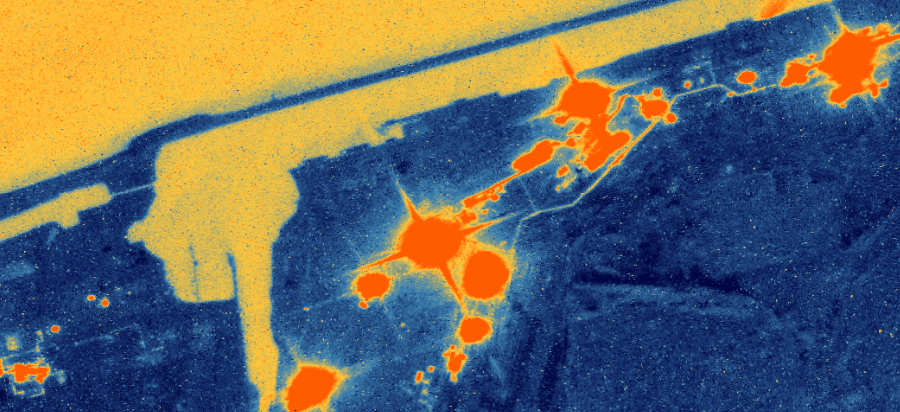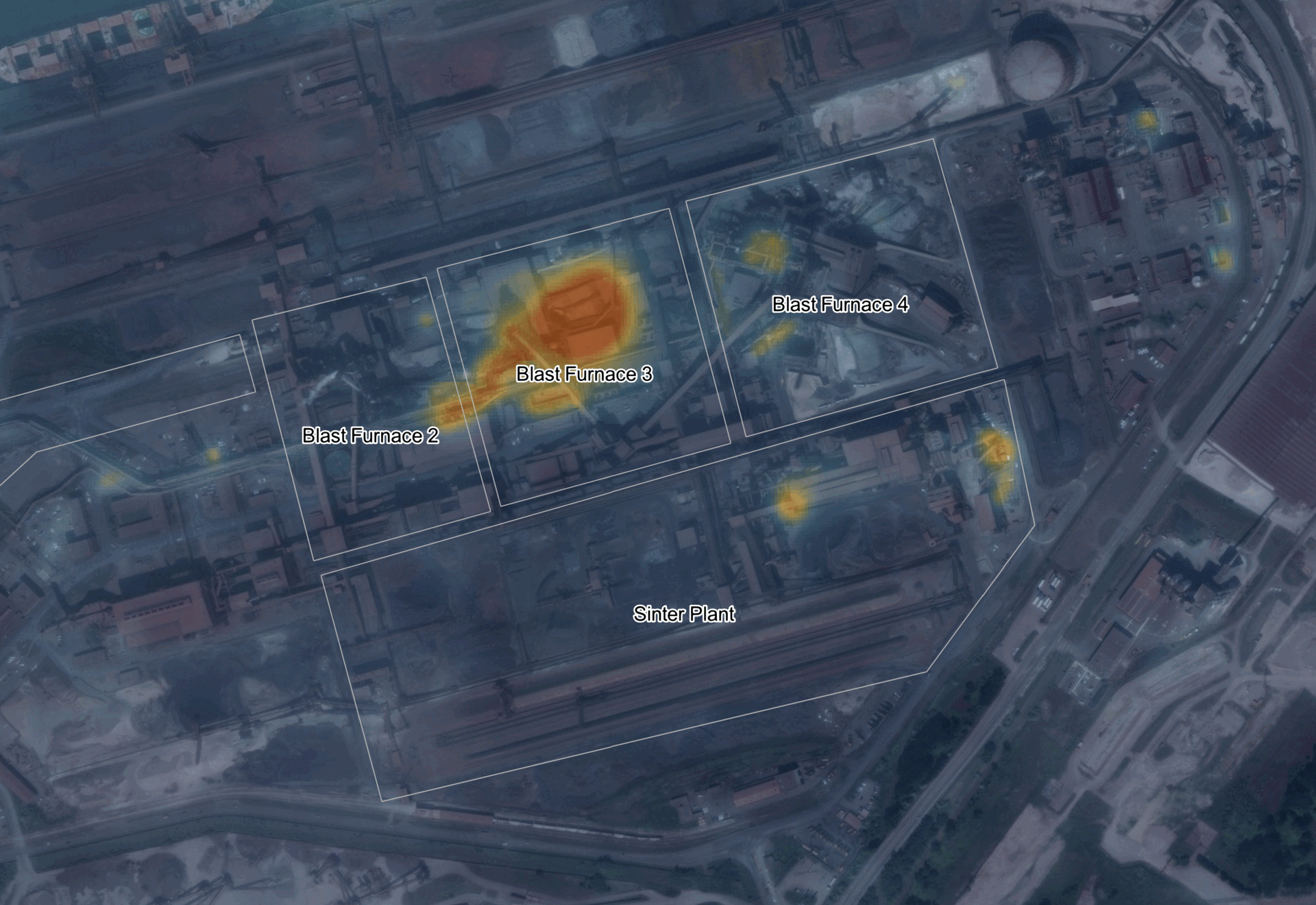

Industrial emissions reporting has relied on self-reported data for too long.
As climate accountability intensifies, stakeholders need independent verification of the emissions numbers that drive critical investment and policy decisions. We partnered with Floodlight - a leading geospatial analytics company specialising in satellite-based CO₂ measurements - to demonstrate how thermal imaging from space can validate and enhance emissions monitoring at the facility level.
Our combined approach transforms assumption-based reporting into evidence-based tracking - replacing spreadsheets with satellite signals, and speculation with verification.
Industrial emissions reporting lacks transparency.
Current emissions reporting depends on self-reported fuel usage, operational logs, and internal calculations. This bottom-up approach creates significant challenges:
For regulators, investors, and insurers, this lack of transparency represents a critical blind spot in climate risk assessment.
A space-based solution
Floodlight, Inc. takes a top-down approach; using satellite sensors like NASA’s OCO-2 to detect actual CO₂ concentrations in the atmosphere and then modeling how those emissions disperse based on wind, terrain, and other factors. It is objective, scalable, and location-agnostic.
SatVu's high-resolution thermal imaging adds the critical operational context - revealing not just what emissions are occurring, but why operational changes drive those emissions patterns. With a 3.5m thermal resolution, day/night capture capability, and up to 20 daily revisits with our future constellation, SatVu offers a level of detail and frequency unmatched in the industry.
Proven results: Dunkirk Steel Plant
Together, we validated this approach at a steel facility in Dunkirk, France which produces 7-million-tonnes of steel annually.
In March 2023, the site underwent a major operational change:
This raised a critical question: Do changes in the thermal profile correspond with measurable shifts in CO₂ emissions at the facility?
SatVu captured these operational changes in detail - providing precise timestamps of furnace shutdowns through the analysis of thermal signatures.

The thermal images above shows the activity of four blast furnaces on site, with significantly more activity on Blast Furnace 4 than the adjacent Blast Furnace 2 & Blast Furnace 3. The less intense thermal signals coming from Blast Furnace 2 and Blast Furnace 3 indicate they are currently idle.
Based on SatVu’s identification of asset-level shutdowns and restarts, Floodlight selected relevant CO₂ satellite overpasses and applied its proprietary atmospheric dispersion models to data from NASA’s OCO-2 satellite to estimate monthly CO₂ outputs. The findings were striking:
.png)
For September 2024, emissions were modelled under the assumption that the Dunkirk plant continued operating at the same capacity and configuration as observed during the last HotSat image acquisition in 2023. This approach ensures a consistent baseline for comparing operational changes and their estimated emissions over time.
Bringing evidence into emissions reporting
This case illustrates a scalable framework for near real-time, facility-level emissions monitoring - one that could redefine climate accountability across industrial sectors.
Embedding this data layer within established sustainability frameworks such as the EU’s Corporate Sustainability Reporting Directive (CSRD) and European Sustainability Reporting Standards (ESRS) ensures compliance with evolving regulations that mandate double-materiality reporting and granular disclosure of emissions data.
Our approach also aligns with the Industrial Emissions Portal Regulation (IEPR), which requires transparent reporting on pollutant releases and resource use, strengthening public access to reliable industrial emissions data.
Crucially, the industry is moving beyond “check-the-box” exercises toward genuine impact reporting – where the emphasis is on real environmental outcomes rather than mere compliance metrics. This shift is being driven by rising investor and stakeholder demands for evidence-based disclosures, as an increasing share of companies prepare for more rigorous sustainability mandates such as the CSRD and IFRS ISSB standards.
By delivering independently verified, outcome-focused insights, our combined satellite-thermal data layer empowers organisations to demonstrate tangible decarbonisation progress, enhance credibility with regulators and investors, and build trust with stakeholders.
Multi-industry applications from a single data source
Unlike other Earth Observation tools, SatVu’s thermal imagery can directly observe operational states across high-emission assets, such as:
.png)
With SatVu’s technology, just one thermal image can inform multiple industries, and support multiple applications. This operational intelligence serves multiple stakeholder needs simultaneously - from environmental compliance monitoring to supply chain risk assessment and commodity trading strategies.
Delivering verified intelligence
Our partnership with Floodlight establishes a new standard for emissions verification: combining atmospheric measurements with operational evidence to deliver independently verified industrial intelligence.
Whether you're implementing climate policies, assessing investment risks, or establishing regulatory frameworks, our data offers solid proof - not estimates - of industrial behaviour.
As the pressure to disclose - and decarbonise - mounts, SatVu is partnering with industry leaders, asset managers, and climate innovators to transform emissions monitoring from assumption to observation.
Ready to pilot this approach and integrate thermal into your carbon management workflows? Email natalia.kuniewicz@satellitevu.com or get in touch to explore how we can support your goals.
